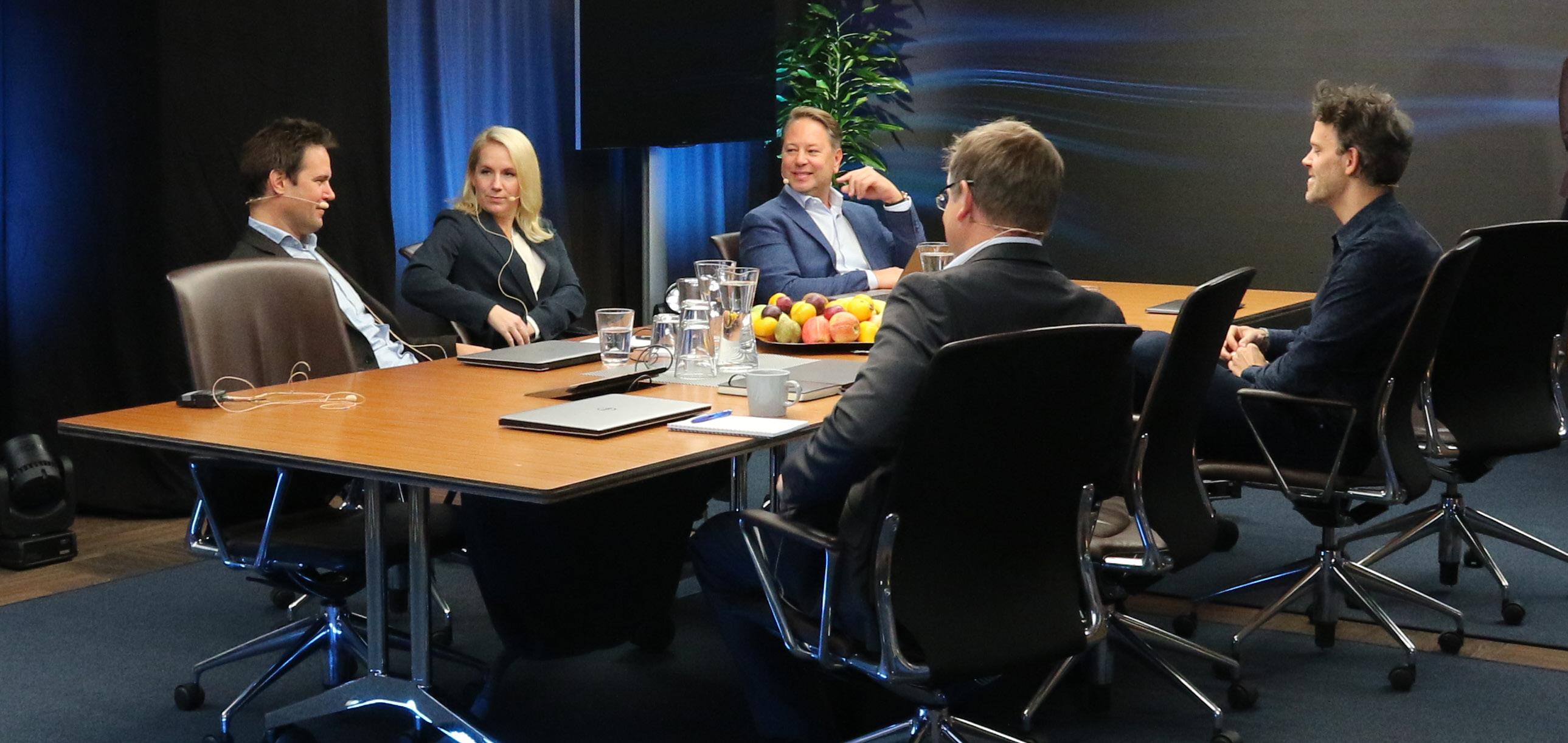
4 minute read
Product innovation: it’s better together
Collaborative innovation provides the cornerstone of RaySearch’s technology strategy thanks to a burgeoning partner network comprised of radiotherapy equipment vendors and leading cancer treatment centers. Business Relationship Manager Ida Blom engages prospective partners to establish strategic fit and common purpose while also extending the scope and depth of existing collaborations.
As the operational point of contact for industry and clinical partners, Blom works closely with RaySearch CEO Johan Löf and deputy CEO Björn Hårdemark. Their goal: to ensure that every partnership is a win-win. “The best partnerships require both sides to work at it, so we always look for strong commitment upfront,” explains Blom. “Equally the story you define at the outset is key for framing the long-term clinical/commercial upsides and what you will accomplish together.”
THE POWER OF PARTNERSHIP Direct engagement with new partners has, of course, been hampered by the ongoing COVID-19 restrictions – not least the replacement of the major scientific conferences and tradeshows with virtual events. “Face-to-face dialogue really matters when initiating a new collaboration,” argues Blom, “because all of our partnerships are built on mutual trust established at director and senior management level.”
Yet while early-stage conversations are not so easy over the phone or on a video screen, Blom was pleased to see a new partnership inked with TAE Life Sciences (TLS) last summer, the culmination of a dialogue that got under way pre-pandemic in 2019. TLS is a US start-up venture that’s pioneering a next-generation treatment modality called boron neutron capture therapy (BNCT) for complicated and recurrent cancers such as glioblastomas or head and neck tumors. Under the terms of the agreement the RayStation® treatment planning system will be integrated as part of TLS’s Alphabeam BNCT treatment machine, working in tandem with the latter’s proprietary dose calculation software. “TLS is our third partner in the field of BNCT, joining Sumitomo Heavy Industries of Japan and Neutron Therapeutics in the US,” says Blom. “The goal in each case is to accelerate the commercialization and clinical roll-out of hospital-based BNCT.”
Meanwhile, 2020 also proved to be a productive year for RaySearch’s existing partnerships, even as those partnerships were forced to recalibrate wholesale to the “new normal” of largely online collaboration. Most notable is the launch of high-dose-rate (HDR) brachytherapy planning in the RayStation 10B* release in December. For context, brachytherapy is a radiotherapy technique commonly used to treat gynecological, prostate, breast, head-and-neck and skin cancers. A small radioactive implant is inserted into the patient’s tissue – directly into a cancerous lesion or close to it – so as to deliver a high dose of radiation to the tumor while minimizing damage to surrounding healthy tissue and organs at risk.
With RayStation 10B, clinics are now able to use the same treatment planning system for HDR brachytherapy and external-beam radiotherapy, yielding significant operational benefits in terms of staff training and patient throughput. RaySearch’s collaboration with Eckert and Ziegler Bebig, a German company which specializes in brachytherapy treatment delivery systems, was fundamental to the development and commercial release of the new planning module, while the radiation oncology teams at AKH Vienna and Centre Antoine Lacassagne in Nice provided clinical validation of the software functionality and associated workflows. “It’s all about triangulation,” notes Blom. “Customer-driven software innovation is shaped and validated by our collaborations with domain experts in industry and clinical practice.”

REIMAGINING VIRTUAL ENGAGEMENT RaySearch staff teams moved swiftly in spring 2020 to re-engineer core business functions around largely digital workflows and online interaction. Yet the COVID-19 reset also provided an opportunity for Blom and colleagues to reimagine the “collective conversation” with RaySearch’s global partner program. Creative thinking was key, for example, to successful delivery of the 2020 virtual meeting of the RaySearch Clinical Advisory Board, a network of nine leading cancer clinics that supports the development and positioning of RayCare as a next-generation OIS. “We used a professional film crew and basically converted two training rooms here in the Stockholm head office into our own temporary TV studio,” explains Blom. “Delegates were impressed with the production values and the quality of engagement – it was like they were dialing into a broadcast newsroom. Another benefit is scalability, with the virtual format enabling wider involvement of RaySearch colleagues and more staff from our partners’ clinical teams.”
VARIATIONS ON A THEME It’s evident as well that looser, more informal partnerships provide opportunities to add value with RaySearch’s clinical customer base. One such is the collaboration with Japanese radiotherapy OEM Toshiba Energy Systems & Solutions, which is currently installing its carbon-ion therapy system at Yonsei Cancer Center in Seoul, South Korea.
With initial patient treatments scheduled for 2022, RaySearch staff are now working with colleagues from Toshiba and Yonsei to integrate the carbon-ion treatment machine with RayStation and the RayCare®* oncology information system. It’s work that builds on a previous collaboration with Toshiba and Yamagata University Hospital in Japan, with the latter also implementing RayStation in combination with Toshiba's carbon-ion therapy system.
Another notable milestone in 2020 is RaySearch’s interoperability agreement with Varian, specifying an interface to seamlessly connect the workflows, scheduling and resource management of RayCare with the latter’s TrueBeam treatment machine. “Our vision is that we must collaborate to succeed,” concludes Blom. “Strength through partnership is very much the mindset here.”










